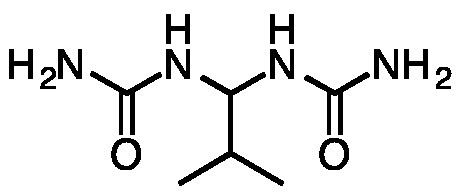 | ||
A controlled-release fertiliser (CRF) is a granulated fertiliser that releases nutrients gradually into the soil (i.e., with a controlled release period). The slowness of the release is determined by the low solubility of the chemical compounds in the soil moisture. Since conventional fertilisers are soluble in water, the nutrients can disperse quickly as the fertiliser dissolves. Because controlled-release fertilisers are not water-soluble, their nutrients disperse into the soil more slowly. The fertiliser granules may have an insoluble substrate or a semi-permeable jacket that prevents dissolution while allowing nutrients to flow outward.
Contents
Definitions
The Association of American Plant Food Control Officials (AAPFCO) has published the following general definitions (Official Publication 57):
Implementation
The fertiliser is administered either by topdressing the soil, or by mixing the fertiliser into the soil before sowing.
One of the advantages of CRF is reduced incidence of fertiliser burn. Other important advantages are economical benefits (labour savings) due to less applications and mostly less overall fertiliser amount. The results (yield) is in most cases improved by > 10%.
Manufacturers and distributors of slow- and controlled- release fertilizers
In North America, the leading producers and/or suppliers of slow- and controlled- release fertilizers are: Agrium Inc. (including Pursell Technologies Inc. and Nu-Gro Corp.), Georgia-Pacific, Growth Products, Helena Chemicals, Kugler Company, Lebanon Seaboard Corp., Lesco Inc, Tessenderlo Kerley and The Scotts Company.
The leading manufacturers and/or suppliers in Western Europe are: Ekompany Agro B.V. (The Netherlands), Aglukon (Germany), BASF (Germany), Compo (Germany), Scotts Europe (The Netherlands), Puccioni (Italy) and Sadepan Chimica (Italy).
In Israel the leading manufacturer and supplier is Haifa Chemicals.
The leading manufacturers and/or suppliers in Japan are: Central Union Fertilizer, Chissoasahi Fertilizer11, Co-op Chemical, Katakura Chikkarin, Mitsubishi Chemical, Sumitomo Chemical, Taki Chemical and Ube Agri-Materials.
In China, the leading manufacturers are: Hanfeng Evergreen, Shandong Kingenta Ecological Engineering and Shikefeng Chemical Industry.
Synonyms
Controlled-release fertilizer is also known as controlled-availability fertilizer, delayed-release fertilizer, metered-release fertilizer, or slow-acting fertilizer.
